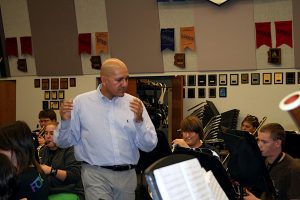 CORNERSTONE 4: DEVELOPING EFFECTIVE ASSESSMENT STRATEGIES
CORNERSTONE 4: DEVELOPING EFFECTIVE ASSESSMENT STRATEGIES
In the first three articles of this five-part series, an emphasis was placed on preparation for effective teaching, strategies for creating a positive learning environment, and how to engage in effective instruction. It’s time to focus on the fourth cornerstone, how to develop effective assessment strategies.
The first strategy is to provide students specific feedback and avoid generalizations. During a warm-up process, for example, be careful to avoid a comment such as, “Nice job.” Some might ask, “What’s wrong with that?” It’s a pleasant comment, but it offers no specific or useful information to our students. Consider the following response instead, “Well done, your beautiful balance and blend tells me that you are engaged and listening! Let’s use this sound for the rest of rehearsal.” This statement is more specific and inspires our students to continue proper performance throughout the rehearsal.
The next strategy is to include student participation in formative and summative assessment. Make sure to include our students as part of the assessment process. For example, quick but effective formative assessments can be made by asking for student feedback with a simple thumbs-up or down response. This provides a quick snap-shot to gauge how everyone is doing. We can proceed with the lesson plan if everyone is on board or take time to review if necessary.
A more effective example is to ask our students to focus on a specific concept prior to playing a musical passage. For example, I might ask my students to listen for clarity of articulation and be prepared to offer suggestions for improvement. This strategy provides more focus and engagement for all the students, even those who might not be playing at the time. Another example is to have them do a written assessment of their performance. I like to use this type of assignment after concerts or festivals as a summative assessment.
The third strategy is to do more assessment off the podium. Think about how much time we spend on the podium or in any one stationary position compared to moving around and being immersed within the students. Great instructional opportunities can be shared on an individual basis during the warm-up process and throughout rehearsals. Moving around the room can also impact attitude and behavior. For example, if minor behavior issues are taking place in the back of the room, spend more time teaching in closer proximity to students demonstrating misbehavior. Generally, our students will refocus back on task while we continue teaching without interrupting the instruction.
The fourth strategy is to video record rehearsals and assess student progress. Start by video recording rehearsals on a consistent basis rather than waiting until the final performance. Too often, only summative assessments are made at concerts or festivals rather than recording several formative assessments leading up to the performances. Think about making every other Friday a recording day and run as much of the concert as possible. Take the weekend to assess the students’ progress and create a priority list of issues that need to be addressed the following week. Perhaps even more importantly, take the time to assess ourselves. I find that we can be our own best teachers if we just take the time to be honest with our teaching and address our greatest shortcomings. That’s how we grow and improve and become better versions of ourselves.
The final strategy is to use outside sources to help with assessment. Invite colleagues to our rehearsals to share new perspectives. Heck, with the use of Skype or other means of technology, we can have our students participate in a video conference with a composer whose work we are preparing. It’s great to see how excited the students get when they are able to collaborate with the composer and how able and willing many composers are to participate in these types of projects. Another idea is to attend festivals that not only provide adjudicator feedback, but enable our students to listen to other performing ensembles.
So, up to this point, we’ve talked about the following four cornerstones for successful teaching:
- planning and preparation for effective teaching,
- strategies for creating a positive learning environment,
- how to engage in effective instruction, and
- how to develop assessment strategies.
The final cornerstone is all about the five strategies of professionalism off the podium. I can’t wait to reconnect with you for the fifth article. Until then, here’s to your success!
